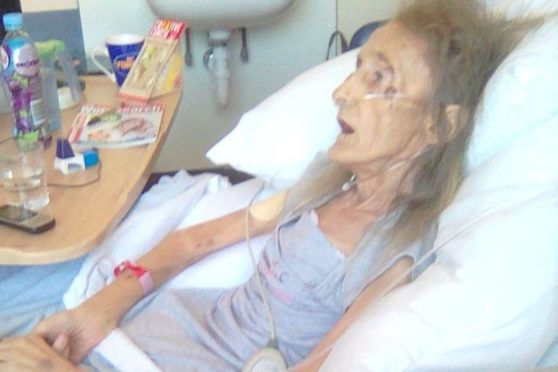Devastating news emerged last week concerning the loss of a 61-year-old Dundonian grandmother who, at the point of death, weighed just three stone.
Christine McCluskey had her weekly Personal Independence Payment benefit stopped and her mobility car removed by the Department for Work and Pensions (DWP) following a medical assessment.
The report indicated she was able to walk 200 metres because she could move from the sofa to her door to allow medical assessors into her home.
Ms McCluskey’s doctor submitted a DS1500 form on her behalf, which under Section 82 of the Welfare Reform Act 2012, requires terminally ill people with less than six months life expectancy to provide medical proof of their terminal condition.
This obligates those with unpredictable illnesses to proceed through a standard claims process of filling in lengthy forms, being assessed by non-medically trained staff as well as meeting work coaches until payments are processed.
Born in 1959, Christine McCluskey attended Stobswell Girls High School (now Clepington Primary School).

In her early twenties, she developed Crohn’s disease which worsened in later life.
Her PIP benefit and mobility vehicle were removed in April 2018.
She was diagnosed with cancer just one month later but was considered too weak to receive chemotherapy and died in August 2018.
Her daughter, Michelle, believes the stress created by the loss of benefits accelerated her mother’s death.
Last Wednesday, the Labour MP Jessica Morden introduced the Ten Minute Rule Bill which seeks to introduce flexibility into the Welfare Reform Act for claimants with terminal illnesses.
She said in the House of Commons: “Clearly, (the application process) is highly inappropriate for people who have been given the devastating news their conditions are terminal.”
She added that between 2013 and 2018, there were more than 74,000 PIP claimants who died within six months of making their claim.
If there is any positive to draw from this, it is that due to the passing of the Social Security (Scotland) Act at Holyrood in 2018, responsibility for Disability Living Allowance (DLA) and Personal Independence Payments (PIP) will transfer from the DWP to Social Security Scotland in 2021.
Social Security Scotland, whose offices are in Dundee, will have oversight of these benefits and the Scottish Government has committed to remove the six-month restriction for terminally ill claimants.
It is tragic that, had this crisis befallen Ms McCluskey and her family just a little later than 2018, the answer to the struggle of this cherished grandmother would have lain within an institution just a mile from her home.
In this context, Social Security Scotland may very well have been able to extend Christine’s life or, at the very least, ensured her final months on this earth were not scarred by such state-instituted misery.
